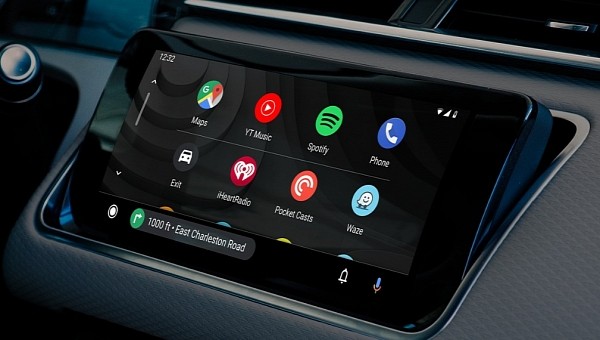Given it’s an Android app, Android Auto should theoretically be able to run on pretty much any device that’s powered by Google’s mobile operating system.
As long as the requirements are met, everything should be running like a charm on an Android phone. But as some people learned the hard way, this isn’t always happening, and this is why many believe that getting a high-end Android device would guarantee a more stable and reliable experience with Android Auto.
Their most common choices are Samsung Galaxy S and Google Pixel phones, but history proved on several occasions that not even a flagship runs Android Auto flawlessly.
And here’s what’s happening right now with Samsung’s latest and greatest Galaxy S model.
Shortly after the Galaxy S22 Ultra got to see the daylight earlier this year, customers who purchased the device started struggling with what is now known as the infamous black screen. Instead of Android Auto running on the display, what they got on the head unit was a black screen, as the app somehow failed to launch for whatever reason.
Since then, users out there have been struggling to find a workaround, all to no avail. Google itself stepped in and shipped a fix in August, but the latest Android Auto versions brought little to no improvements for most users out there.
In the meantime, the struggle to bring Android Auto back to a running state continued, and someone on the Google forums has recently discovered a trick that seems to help fix the app. The only problem is that it’s a major pain in the neck, and it must be applied every time you get behind the wheel.
More specifically, it all comes down to forcing Android Auto to start from scratch in the car, so the initial setup would have to be completed again.
In other words, what you need to do is go to the app’s settings on the mobile device, force stop Android Auto, then clear all the data and the cache. Next, reconnect the mobile device to the head unit, and you should see the original out-of-the-box experience (OOBE) firing up, therefore letting you set up Android Auto for the first time.
The big problem is that all of these are gone when you turn off the engine, so when you connect the smartphone to the head unit a second time, the black screen would probably be back. This means you need to follow all the aforementioned steps once again.
Someone else suggests buying a wireless Android Auto adapter, as, for some reason, the issue is mostly impacting wired connections. However, the cheapest dongle sells for about $89, so it goes without saying such a workaround isn’t exactly cheap.
Their most common choices are Samsung Galaxy S and Google Pixel phones, but history proved on several occasions that not even a flagship runs Android Auto flawlessly.
And here’s what’s happening right now with Samsung’s latest and greatest Galaxy S model.
Shortly after the Galaxy S22 Ultra got to see the daylight earlier this year, customers who purchased the device started struggling with what is now known as the infamous black screen. Instead of Android Auto running on the display, what they got on the head unit was a black screen, as the app somehow failed to launch for whatever reason.
Since then, users out there have been struggling to find a workaround, all to no avail. Google itself stepped in and shipped a fix in August, but the latest Android Auto versions brought little to no improvements for most users out there.
In the meantime, the struggle to bring Android Auto back to a running state continued, and someone on the Google forums has recently discovered a trick that seems to help fix the app. The only problem is that it’s a major pain in the neck, and it must be applied every time you get behind the wheel.
More specifically, it all comes down to forcing Android Auto to start from scratch in the car, so the initial setup would have to be completed again.
In other words, what you need to do is go to the app’s settings on the mobile device, force stop Android Auto, then clear all the data and the cache. Next, reconnect the mobile device to the head unit, and you should see the original out-of-the-box experience (OOBE) firing up, therefore letting you set up Android Auto for the first time.
The big problem is that all of these are gone when you turn off the engine, so when you connect the smartphone to the head unit a second time, the black screen would probably be back. This means you need to follow all the aforementioned steps once again.
Someone else suggests buying a wireless Android Auto adapter, as, for some reason, the issue is mostly impacting wired connections. However, the cheapest dongle sells for about $89, so it goes without saying such a workaround isn’t exactly cheap.






